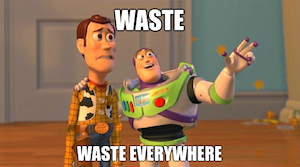To survive in today’s highly competitive world, industries and business organisations need managers and decision-makers who can apply mathematical concepts and scientific management techniques to resolve technical issues in a cost-effective way. The industrial engineering field has extensively been documented as a major source of management talent. An industrial engineer along with understanding these problems, is able to devise and carry out methods to solve them.
How They Do IT?
Industrial engineers focus on increasing quality and productivity
through:
- The management of people
- Methods of business organization, and
- Technology.
To increase efficiency and effectiveness, industrial engineers carefully study the requirements of product/service and then to meet those requirements they design manufacturing and information systems with the help of mathematical methods and models.
They develop control systems such as management control systems to support financial planning and cost analysis, and production planning and control systems to coordinate activities and ensure quality of product.
They deal with developing or improving the physical distribution systems to provide goods and services to final destinations. They also determine the most efficient plant locations, develop wage and salary administration systems and job evaluation programs.
They develop control systems such as management control systems to support financial planning and cost analysis, and production planning and control systems to coordinate activities and ensure quality of product.
They deal with developing or improving the physical distribution systems to provide goods and services to final destinations. They also determine the most efficient plant locations, develop wage and salary administration systems and job evaluation programs.
They Are Versatile..
Industrial engineers increase efficiency keeping in mind the cost control factors. therefore they are also useful for most industries including nonprofits.
They are not as specialized as other engineers, hence they are employed in a wide range of other industries, including hospitals, consulting and engineering services, and research & development firms.
They are not as specialized as other engineers, hence they are employed in a wide range of other industries, including hospitals, consulting and engineering services, and research & development firms.
They are versatile because their expertise focuses on reducing internal costs, making their work valuable for many industries. For example, growth in healthcare and finding ways to deliver best care will create demand for industrial engineers.
Types of Versatile Problems They Can Solve..
- They can find out the optimum inventory levels to be kept in the warehouse, or in the super store
- They can design automated material handling systems for the movement of parts in a factory such as AGV.
- They can integrate information and control between manufacturing systems, automated guided vehicles, automated warehouse facilities, and management personnel by designing computer-integrated manufacturing systems and decision support systems.
- They can provide you optimal scheduling cases to operating rooms in a hospital, or production orders in a factory.
- They can provide you best location analysis whether it is about placing a machine, plant or locating a factory considering the economic and operational perspective.
- They can design computer-aided process planning (CAPP) systems that accommodate flexibly to vary the sequence of operations to produce a product.
- They can determine the optimal route of ambulances through a city, or material handling vehicles in a factory, to minimize travel time.
- They can develop reliability and quality management systems (QMS) to ensure that a manufactured product is free from defects.
- They study Ergonomics to improve productivity of workers by ensuring work place safety, designing user-friendly computer graphics systems to assist operators in the monitoring and control of industrial processes.
If you want to increase the efficiency of your organisation...Hire an Industrial Engineer!
Reference: Bureau of Labor Statistics, U.S. Department of Labor, Occupational Outlook Handbook, 2016-17 Edition, Industrial Engineers,
on the Internet at http://www.bls.gov/ooh/architecture-and-engineering/industrial-engineers.htm




.jpg)
